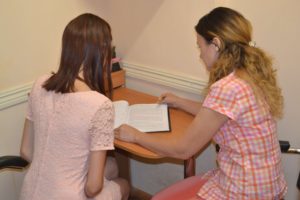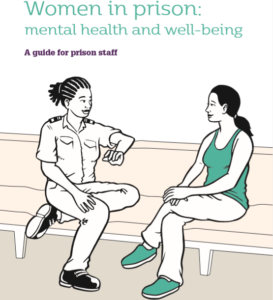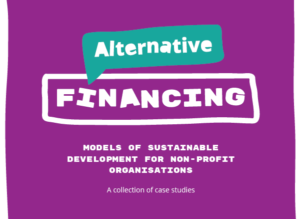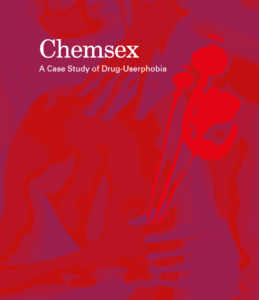 Ukraine has a high HIV prevalence with an estimated number of 240,000 people living with HIV in 2017. Most-at-risk adolescents (MARA) are among the most vulnerable groups of the HIV/AIDS epidemic in Ukraine. The estimated total number of MARA is 129,000 people (10-19 years old), of which 21,700 are people who inject drugs. There are yet no official statistics on the exact number of MARA, including underage people who use drugs. In Ukraine, MARA represent a very closed group. Lack of statistical data, stigma, discrimination and legal barriers make their access to HIV/Sexual Transmittable Infection (STI) services more complicated contributing to increased risks of HIV. Since 2012, AIDS Foundation East-West in Ukraine (AFEW–Ukraine) has an established system of services for young people who use drugs in the framework of the Bridging the Gaps programme. Social bureaus, rehabilitation centres and day-care centres in four cities are currently opened providing 21,290 services to 1,215 adolescents in Ukraine.
Ukraine has a high HIV prevalence with an estimated number of 240,000 people living with HIV in 2017. Most-at-risk adolescents (MARA) are among the most vulnerable groups of the HIV/AIDS epidemic in Ukraine. The estimated total number of MARA is 129,000 people (10-19 years old), of which 21,700 are people who inject drugs. There are yet no official statistics on the exact number of MARA, including underage people who use drugs. In Ukraine, MARA represent a very closed group. Lack of statistical data, stigma, discrimination and legal barriers make their access to HIV/Sexual Transmittable Infection (STI) services more complicated contributing to increased risks of HIV. Since 2012, AIDS Foundation East-West in Ukraine (AFEW–Ukraine) has an established system of services for young people who use drugs in the framework of the Bridging the Gaps programme. Social bureaus, rehabilitation centres and day-care centres in four cities are currently opened providing 21,290 services to 1,215 adolescents in Ukraine.
Experience shows that young people who use drugs are confronted with various types of violations of their rights, which are often not officially registered and publicly known. The fact that young people face stigma and discrimination forms a barrier for asking for help from health specialists. Adolescents are publicly humiliated by teachers, priests and even their parents because of the fact that they use drugs. There is also a lack of appropriate mechanisms for response and misunderstanding young drug users have about their own rights. In Chernivtsi, for instance, one of the problems is the lack of an effective mechanism for responding to suicide attempts among adolescents, especially if these attempts are related to the use of drugs. Therefore, young people who use drugs often do not report human rights violation or apply for protection. Social workers and psychologists do not feel they have relevant knowledge and tools to respond to violations.
Therefore, in 2016 AFEW-Ukraine created an instrument for monitoring human rights violations among young people who use drugs. This instrument was developed for any specialist providing help to young people who use drugs. It can be used by a wide range of organisations and specialists with some basic knowledge about human rights who worked with vulnerable children, adolescents and youth. Based on the outcomes of the monitor tool, the scale of the problem became apparent and advocacy actions on the national and local level can be adjusted. From 2017 onwards, in four Ukrainian cities – Chernivtsi, Kharkiv, Kropyvnytsky, Poltava – AFEW-Ukraine organised introductory trainings that helped specialists gain experience on how to use the tool.
“A social worker or any other professional working with people who live with HIV can defend their rights. This does not require special legal education. Specialists often do not understand that the problems faced by their clients is, in fact, the case of human rights violations that needs special attention,” says Anastasiya Shebardina, Senior Project Manager AFEW-Ukraine.
Over 100 specialists were trained on how to use the tool. Social workers, lawyers, teachers and psychologists of NGOs, representatives of the patrol police, the probation service, youth prevention services for children, social services, local departments of education and medical facilities from the referral network were among those specialists. They had the opportunity to analyse specific cases of violations of the rights of minors and in cooperation with trainers developed an action plan within each city. The tool consists of a questionnaire which is filled in on paper together with an adolescent. Based on the answers in the questionnaire, one can get an idea about the life of the adolescent. In the case of violation, adolescents are matched to a lawyer for legal assistance. An online form for registering human rights violations is filled out by social workers. This form allows to collect statistical data on the rights violations and, if necessary, a follow-up with counselling assistance. A wider range of participants who wished to learn more about the monitoring tool could do it during the educational webinar.
The tool demonstrates that documenting cases of human rights violations help service providers to recognize them and provide timely response better. The analysis of the documented cases allows to identify typical situations for each separate region or city and make advocacy actions more effective. NGOs have also established closer personal contacts with representatives of governmental agencies such as police and probation. Now they plan and implement joint activities. For more systematic future response, the instrument learns what need legal specialists and human rights organizations have to be involved in referral networks. In the long run, this instrument can become a national mechanism for civil society on improving service delivery and upholding human rights.



